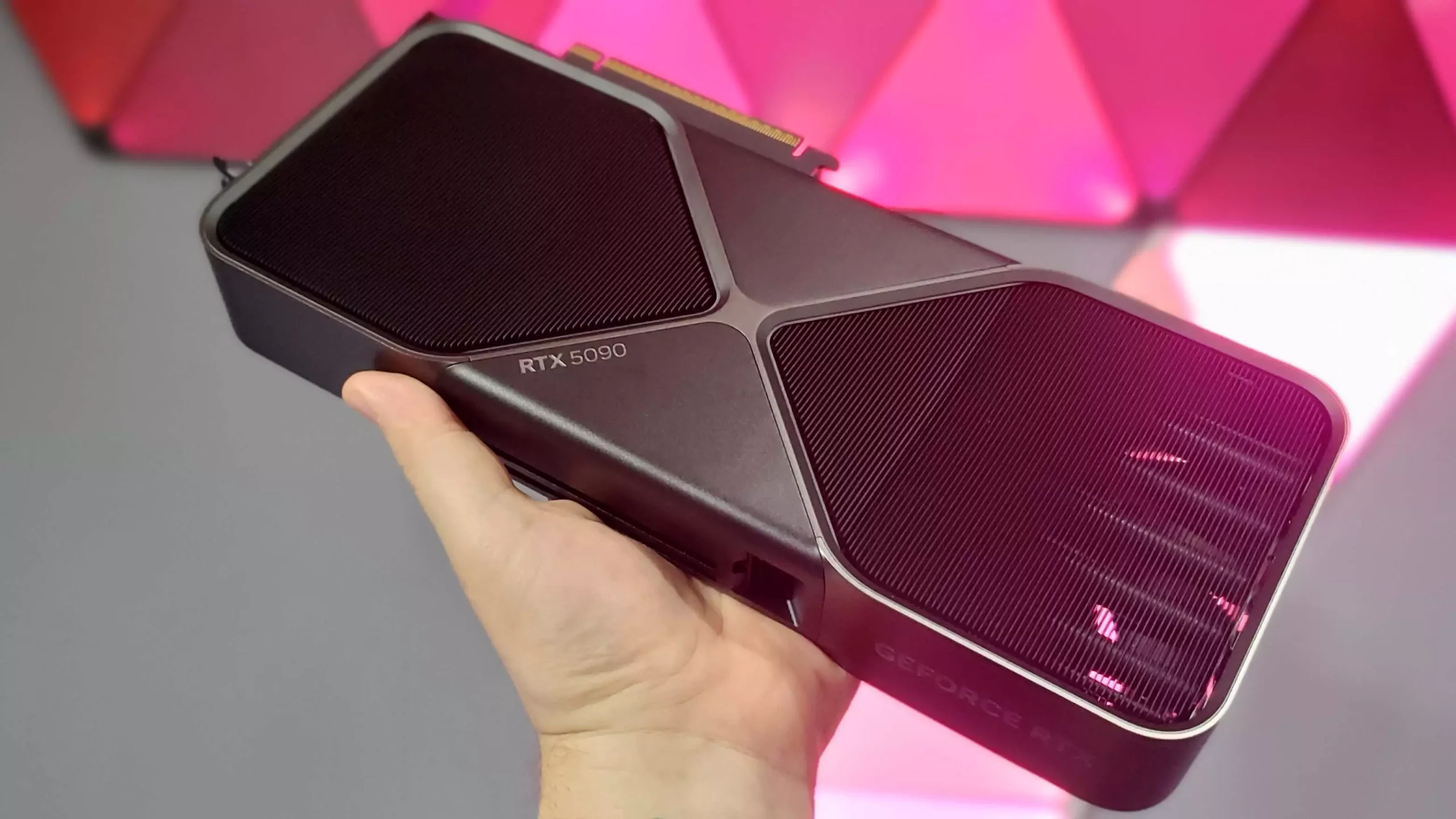In an unexpected turn of events, the graphics card market appears to be inching towards stability, particularly with Nvidia’s RTX 5090. Six months post-launch, consumers in certain regions are finally able to purchase this coveted GPU at prices that defy the exorbitant markups seen during the pandemic and prior crypto mining booms. The RTX 5090, which has sparked significant interest among gamers and professionals alike, has found a seemingly more reasonable price point in some markets, generating a palpable sense of optimism. However, as evidenced by ongoing discrepancies in pricing across different nations, this resurgence comes with caveats.
In the UK, for instance, the RTX 5090’s list price is £1,889, yet retailers like Overclockers UK are selling it for just shy of that at £1,879.99. While this nominal reduction may seem insignificant, it signifies a break from the outrageous retail premiums that plagued consumers for years. Still, one must be cautious in interpreting this as a universal trend, especially with the realities in the United States still manifesting starkly higher prices, often thousands of dollars above the Manufacturer’s Suggested Retail Price (MSRP).
The American Market: Still Under Pressure
The stark contrast is striking when you look across the Atlantic. In the U.S., the MSRP for the RTX 5090 is pegged at $1,999, yet the current market conditions have led retailers like Newegg to offer this GPU for an eye-watering $2,919.99. This situation raises questions about whether the price fluctuations are merely temporary or indicative of deeper systemic issues within the American market. Factors like tariffs, ongoing supply chain disruptions, and rampant consumer demand keep prices inflated, demonstrating that while there may be signs of normalization elsewhere, the U.S. remains a wildcard.
It’s essential to acknowledge the compounding issues influencing these price discrepancies. Tariffs imposed on imports have rendered these products even more expensive, which places an unusually heavy burden on consumers. As local economies wrestle with inflation and other economic stressors, the entry of these graphics cards at ostensibly higher prices might cause buyers to rethink their purchasing strategies.
The European Scene: A Mixed Bag
Zooming into Europe, the landscape is equally fragmented. With listings showing the RTX 5090 hovering near €2,339, certain retailers momentarily offered it at €2,299, which sounds appealing on the surface. However, a deeper examination reveals price volatility that still places many GPUs outside the immediate reach of average consumers. Proshop.fi, for instance, has fluctuated pricing, underlining the reality that price tags in this market remain unpredictable.
Despite these fluctuations, a positive narrative is emerging. The return of GPUs to standard retail prices is a good start, leading enthusiasts to speculate on the future viability of graphics cards as essential components of gaming and creative technology. If trends continue, there could be a robust future for gamers eager to upgrade or transition into the high-performance world of modern GPUs.
The Path Forward: Hope or Hurdles?
Looking forward, one could argue the cards are indeed beginning to fall back into their rightful places, with prices stabilizing. The encouraging indicators of the UK market are certainly a good sign, showing signs of recovery after enduring a chaotic period of inflated prices. However, one must remain skeptical—and rightly so—about the longevity of this trend, especially in the U.S. market.
What can be gleaned from these current dynamics? The ongoing tariff policies under U.S. administration can continue to be destabilizing factors. If tariffs revert to normal and global supply chains reconcile their inefficiencies, one can reasonably project a gradual decline in prices that could eventually make cutting-edge GPUs accessible again. However, political shifts and international relations could dramatically alter this trajectory in unpredictable ways.
As consumers, staying informed and vigilant about market trends while navigating these complex layers of price fluctuations should be a priority. The current reality is that gaming enthusiasts are at the mercy of broader economic narratives—always waiting for a sustained improvement that seems just out of reach.

